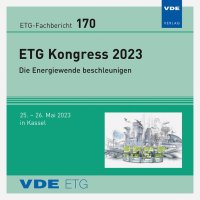Infrastructure of a Laboratory Coupled Co-simulation for the Investigation of Flexibility Provision in Distribution Grids
Konferenz: ETG Kongress 2023 - ETG-Fachtagung
25.05.2023-26.05.2023 in Kassel, Germany
Tagungsband: ETG-Fb. 170: ETG Kongress 2023
Seiten: 9Sprache: EnglischTyp: PDF
Autoren:
Fayed, Sarah; Rolink, Johannes (University of Applied Sciences Emden/Leer, Emden, Germany)
Rubio, Alejandro; Petznik, Jan; Schuldt, Frank (DLR-Institute of Networked Energy Systems, Oldenburg, Germany)
Inhalt:
Numerical simulations of smart grids typically operate under the assumption that the power grid is in a steady state and hence, too small or too fast transient effects in the grid are neglected. Moreover, some device characteristics of a real energy system may not be taken into account, due to the high complexity of these devices which could make the numerical calculations inefficient. This requires further experiments including the coupling of relevant hardware to be able to monitor and validate the system’s behavior under close-to-real conditions with the help of Power-Hardware-in-the-loop experiments. Moreover, combining infrastructures from different energy laboratories offers larger environments with extended functionalities provided from numerical simulations and hardware emulations. Within the scope of the research project “Future Energy Laboratory – ZLE”, a concept for coupling spatially separated energy laboratories in Lower Saxony, Germany, is to be developed. In this paper, two laboratories are used for collaborative experiments to build a standard low voltage grid topology, where simulations are performed to test strategies for voltage control at grid nodes with the help of decentral flexibility provision. Two different testing environments are applied to investigate the restrictions of the laboratory coupling approach in two simulation scenarios. A corresponding numerical simulation has been performed for each scenario for validation purposes. Although deviations between the reference model and the experimental results were observed, the results show the viability of geographically separated co-simulations for quasidynamic studies.


